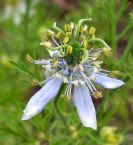 If you are a Muslim and wish to buy a "halal" soap at a big supermarket like Tesco, Giant or Carrefour, chances are that you won't find it or would have some difficulties locating it. This is because most soap brands contain glycerine, which is chemically derived from animal fats.
If you are a Muslim and wish to buy a "halal" soap at a big supermarket like Tesco, Giant or Carrefour, chances are that you won't find it or would have some difficulties locating it. This is because most soap brands contain glycerine, which is chemically derived from animal fats.Last week I went to a large supermarket at Mutiara Damansara for my grocery requirement. One of the items that I wanted to buy was soap with the "halal" label, as the one left in my bathroom had dwindled down to an insignificant size.
As usual, I went to the toiletries section of the supermarket, to look for the soap. I selected each brand of soap one by one to look for the "halal" sign on the cover. I found to my disaapointment that all of them contained "glycerine" and there was no "halal" sign whenever the soap had glycerine as one of its components.
There was one brand of soap which was supposed to contain vegetable oil. But this brand had no "halal" label on it and comparatively more expensive than the others. Therefore, I didn't buy it.
I was about to give up when I instinctively bent down to reach for a brand of soap that was placed among a row at the lowest rung corner of the shelf. "Alhamdulillah," the soap had a "halal" logo sign on it and upon reading the ingredients written on the cover it did not mention "glycerine". The soap's brand was "Fruitale - Nutrient" and produced by Lam Soon Group of Companies. One pack contained 3 bars of soap and cost only RM1.98 and that was considered as cheap.
This brand of soap was placed at an insignficant part of the shelves - I wondered why. Was it because it was cheaper and therefore made less conspicous? I guess the supermarket people knew better ;)
Some of you who may be wondering what the fuss is all about. Let me inform you about "glycerine". The Wikipedia defines it as a translucent, colorless, odorless, brittle, nearly tasteless solid substance, derived from the collagen inside animals' skin and bones. It is commonly used as a gelling agent in food, pharmaceuticals, photography, and cosmetic manufacturing. Gelatin is a protein produced by partial hydrolysis of collagen extracted from the bones, connective tissues, organs and some intestines of animals such as domesticated cattle, pigs and horses.
It was narrated by Abu Muhammad Al-Hassan Bin Ali Bin Abi Thalib, grandson of the Prophet (Prayers and Peace be upon him) who said,"I have memorised from the Prophet (PPBUH) who said,"Leave the things that are doubtful to things that are not doubtful to you."" (From Termizi)
Thus, if glycerine is obtained from the animals, then it becomes a doubtful ingredients for the Muslims as it is very difficult to know what type of animal it was obtained from. Even if it comes from animals other then pigs, we don't know whether these animals were slaughtered in the correct Islamic way. As such, glycerine is doubtful unless we know from which source it was obtained.
Now, my question is, if the other brands of soap contained glycerine which comes from "halal" animal fat, then why didn't they put the "halal" logo on the packet? Makes one wonder, right?
We take our bath before a solat or wash our hands before a meal with soap. Now instead of cleaning our body and hands, we in fact rub the "haram" g;ycerine onto them. Now, does that make us clean? Think about it. :roll:






